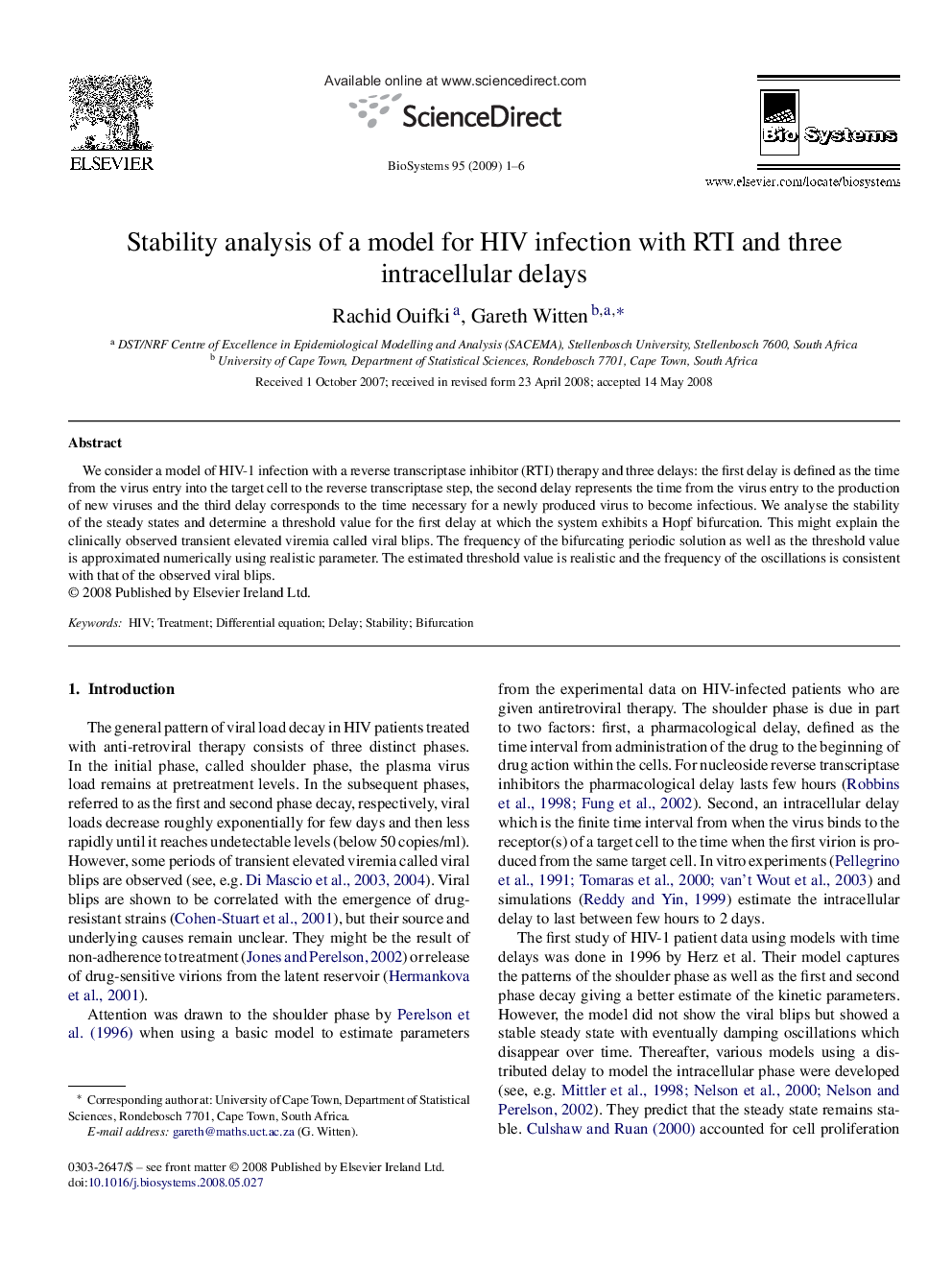| Article ID | Journal | Published Year | Pages | File Type |
|---|---|---|---|---|
| 2076618 | Biosystems | 2009 | 6 Pages |
We consider a model of HIV-1 infection with a reverse transcriptase inhibitor (RTI) therapy and three delays: the first delay is defined as the time from the virus entry into the target cell to the reverse transcriptase step, the second delay represents the time from the virus entry to the production of new viruses and the third delay corresponds to the time necessary for a newly produced virus to become infectious. We analyse the stability of the steady states and determine a threshold value for the first delay at which the system exhibits a Hopf bifurcation. This might explain the clinically observed transient elevated viremia called viral blips. The frequency of the bifurcating periodic solution as well as the threshold value is approximated numerically using realistic parameter. The estimated threshold value is realistic and the frequency of the oscillations is consistent with that of the observed viral blips.
